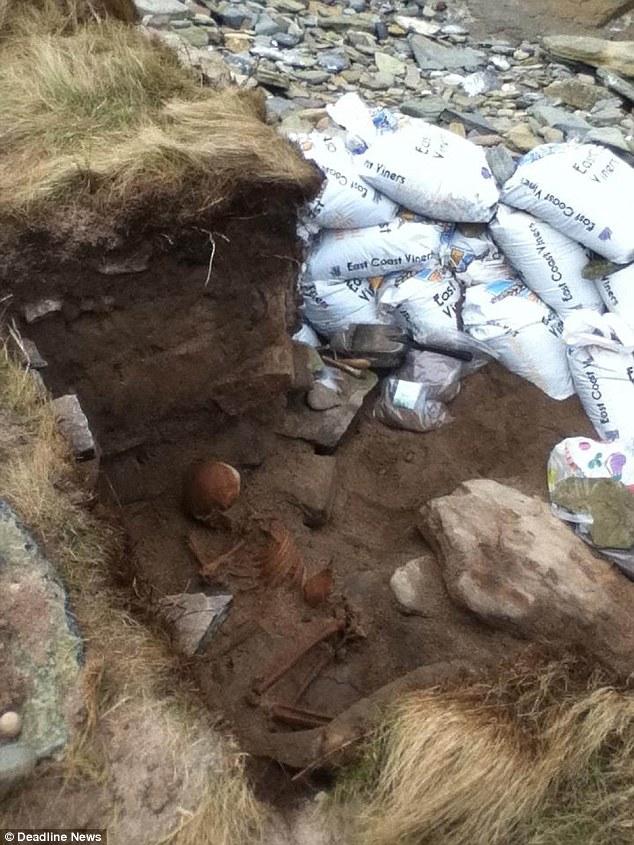
For 4,000 years, the remains of a small child lay buried beneath a Scottish beach until storms recently exposed the makeshift grave.
The child – who is believed to have been around 10 years old at the time of death – was discovered by a walker in Orkney.
And now remarkable pictures of the subsequent excavation show how the complete skeleton was almost perfectly preserved in the sand.
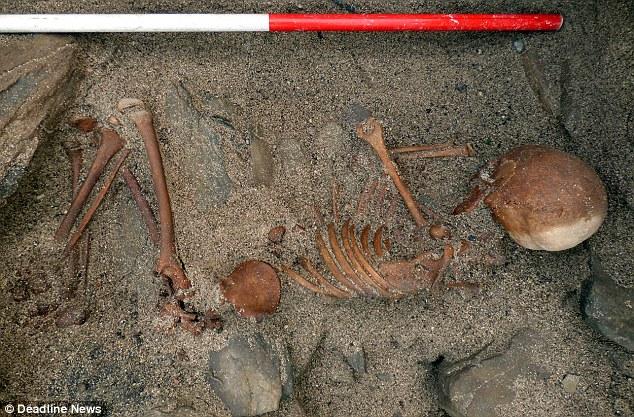
The shocking discovery – dating back to the early neolithic period – was made by tour guide Carrie Brown, 32.
The child would have have been buried around the same time the pyramids were being built in Egypt.
Ms Brown was on a stroll with her partner Ali Thorne, 34, to look at a rock they hoped could be a burial stone, when they discovered the skeleton.
But mystery remains about how the child died and if the skeleton belonged to a boy or girl.
‘The reason we were there was due to a stone we saw before Christmas time. We thought it might have some runic writing on it,’ Ms Brown said.
‘We noticed what looked like ribs sticking out of the sand. Three or four ribs were exposed.I thought it was human, or very much hoped it was.
‘We told the local archaeologist who quickly had a look and said it was.’
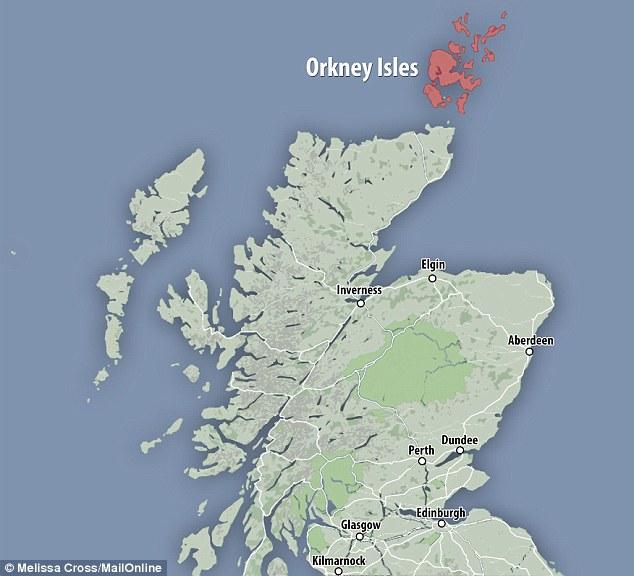
.
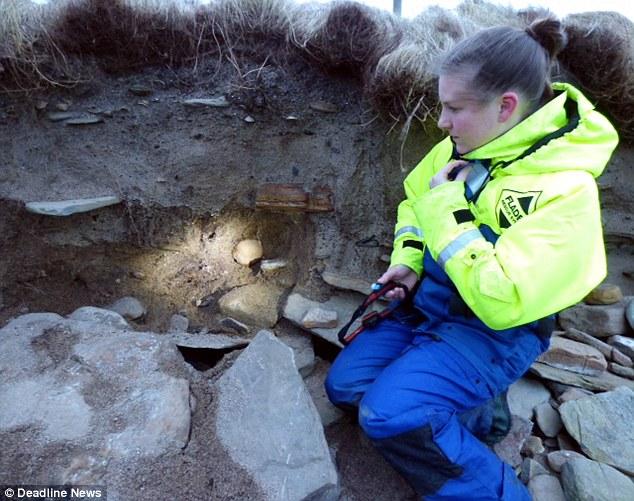
.
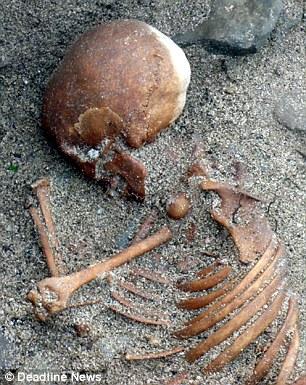
.
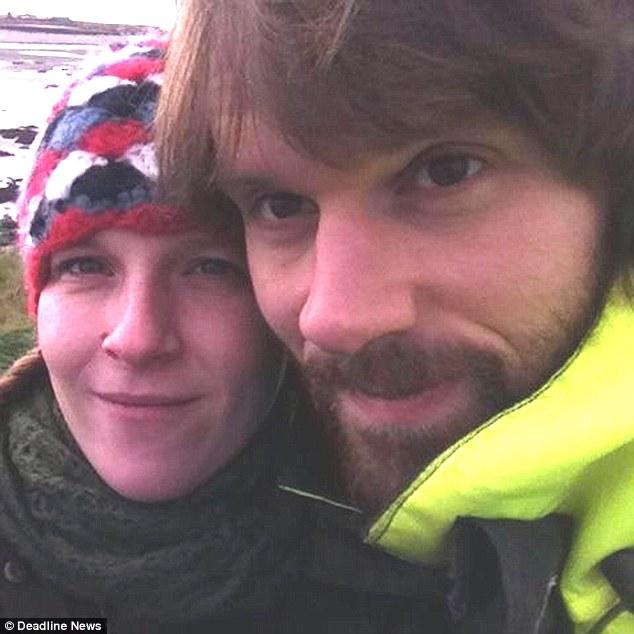
She continued: ‘We regularly go on beach walks. Orkney is a great place for archaeology – I’ve always been interested in it.
‘I knew it wasn’t the correct thing to do to dig further. I would have been slightly nervous.
‘I certainly wasn’t expecting to find human remains.’
Ms Brown made the discovery last Tuesday and, after the skull was exposed by the local archaeologist, Historic Scotland was called to the scene.
Expert archaeologists worked on the site for several days and on Monday the remains were fully removed for carbon dating.
Ms Brown said: ‘They gave me an approximate date of around 3,000 to 4,000 years old.
A child between the age of 10 and 12.’
She believes winter storms are the reason why, after 4,000 years, the child has since been uncovered.
‘There have been heavy storms here over the last few months,’ she said.
‘Things get covered up then uncovered. There is a fair chance there is more.’
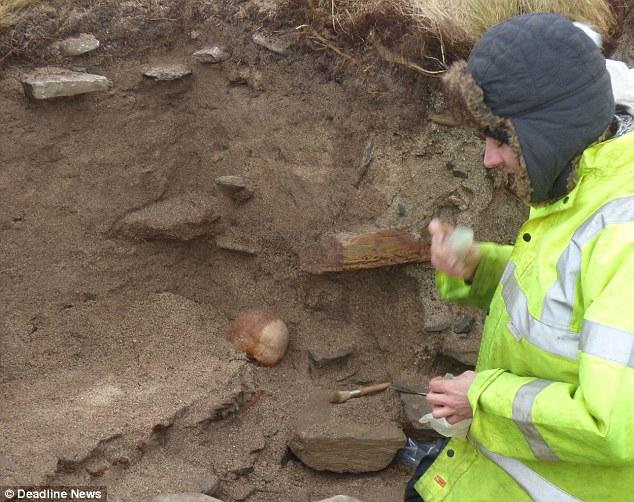
.
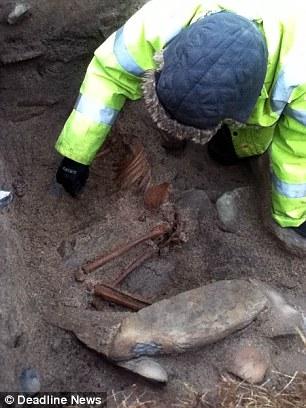
.
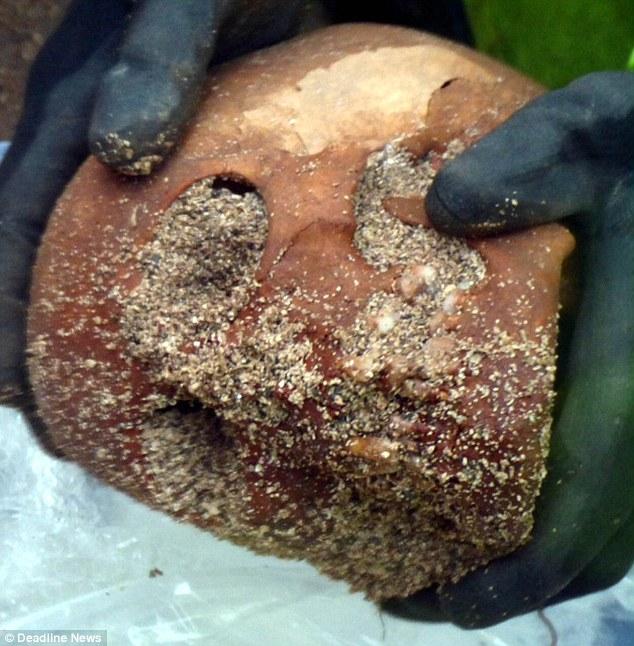
The remains of the child appear to pre-date one of Orkney’s most important archaeological finds – uncovered on the same island after storms.
In 1985, a local farmer found a collection of bones jutting out from an exposed sandbank.
Several years later after the site was excavated, a 21.3ft (6.5 metres) viking long boat was uncovered alongside the human remains.
Items including an iron sword, a quiver containing eight arrows, a bone comb and a set of 22 gaming pieces were found to date back to between 875 AD and 950 AD.
Evidence of human occupation of the remote Orkney Isles appears at around the fourth millennium BC.
By this time the bands of hunter-gatherers of the Mesolithic had gradually evolved into an agricultural society.
Groups of farmers made their way across the Pentland Firth from Caithness and western Scotland to settle in the fertile northern islands.
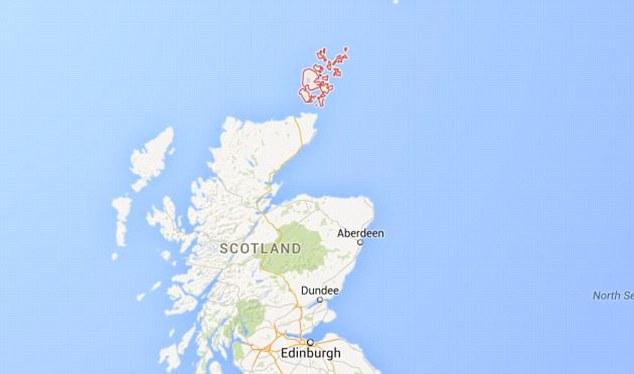
.

archaeology